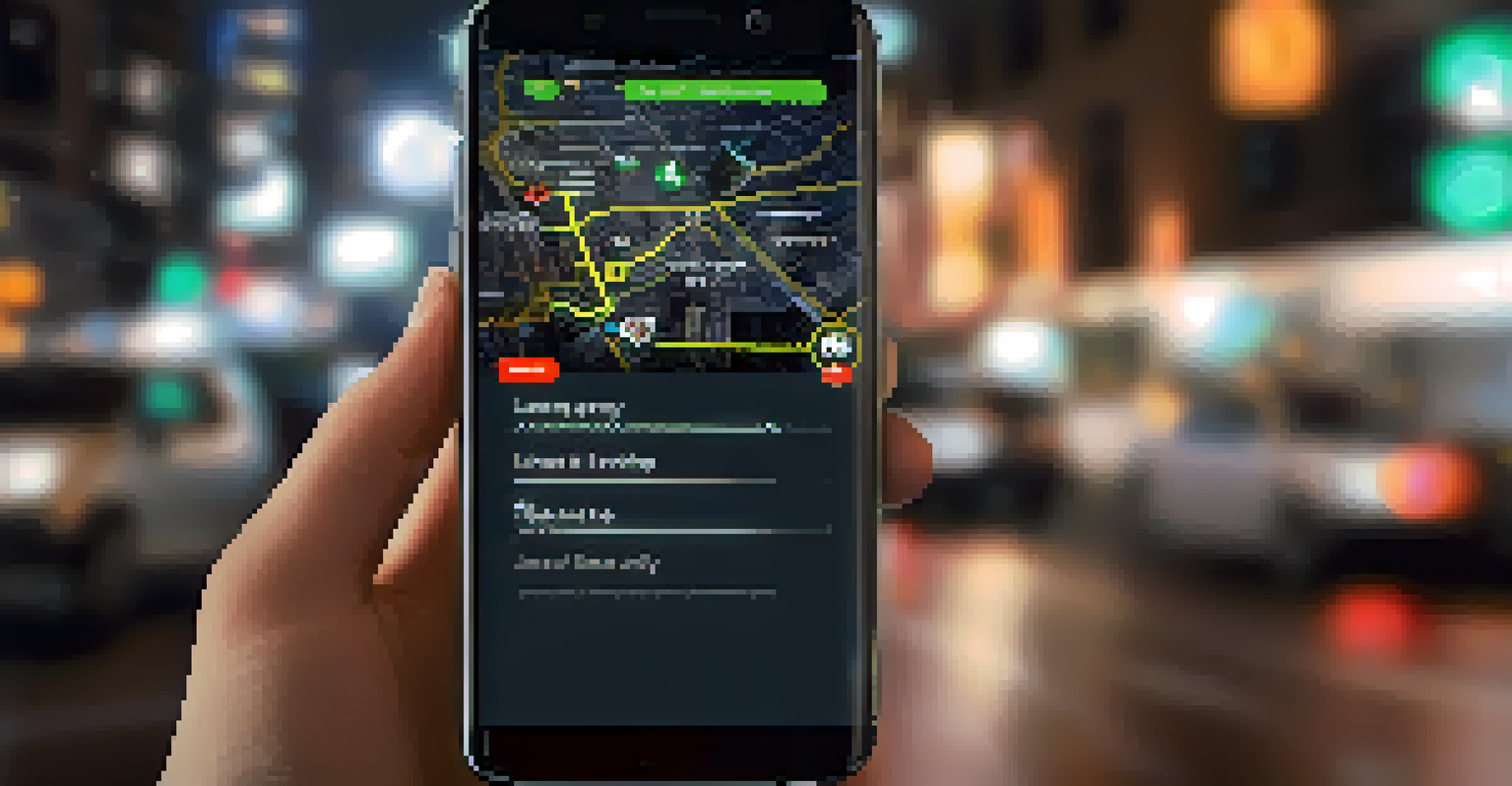Navigating Unsafe Areas: Tips for Nighttime Safety

Understand Your Surroundings Before You Go
Before venturing out at night, take some time to familiarize yourself with the area. Research neighborhoods online, check local crime statistics, and read reviews to gauge the safety level. This preparation can provide a clearer picture of what to expect and help you avoid potentially dangerous spots.
The best way to predict your future is to create it.
Consider using apps that provide real-time safety updates or community reports. These tools can alert you to any incidents happening nearby, giving you a better chance of avoiding risky situations. Remember, knowledge is power, and being aware of your surroundings is the first step towards safety.
Lastly, if you can, ask locals about the area. They often have insights that online sources may not provide. Engaging with the community can also help you feel more connected and less isolated during your nighttime outings.
Plan Your Route in Advance
Planning your route ahead of time can significantly enhance your nighttime safety. Use mapping apps to identify well-lit streets and avoid shortcuts through alleys or isolated areas. Opt for routes that are frequented by pedestrians or have visible surveillance, as these tend to be safer.

While it may be tempting to take the shortest path, remember that the extra few minutes could make a difference in keeping you safe. Share your planned route with a friend or family member, so someone knows where you are headed and can check in if necessary.
Know Your Area Before Going Out
Familiarize yourself with the neighborhood, utilizing local insights and safety apps to enhance your awareness.
Additionally, consider using public transport instead of walking if your destination is far away. Buses and trains often have more people around, providing a buffer of safety compared to walking alone at night.
Stay Alert and Aware of Your Surroundings
One of the most critical aspects of nighttime safety is staying alert. Avoid distractions like using your phone or listening to loud music through headphones, as these can make you less aware of your surroundings. Instead, keep your head up and be mindful of the people and activities around you.
Safety isn't expensive, it's priceless.
Trust your instincts—if something feels off, it probably is. Be prepared to change your route or seek help if you feel uncomfortable. This heightened awareness can help you spot potential dangers before they escalate.
Engaging in light conversation with a friend or partner while walking can also keep your mind focused and help you feel more secure. It’s harder for someone to approach you if you are clearly engaged in conversation and aware of your environment.
Dress Smartly for Nighttime Safety
What you wear can impact your safety at night. Opt for comfortable shoes that allow for quick movement if needed. Avoid flashy jewelry or clothing that may draw attention, as this can make you a target. Instead, choose practical outfits that allow you to blend into the crowd.
Consider wearing clothes that are visible in low light, like bright colors or reflective materials. This not only helps others see you but can also make you feel more confident as you navigate your surroundings.
Plan Your Route for Safety
Map out well-lit, populated routes and share your plans with someone to ensure a safer journey.
Additionally, keep your belongings close. Use a crossbody bag or a backpack that you can easily access but is also secure. This minimizes the risk of theft and ensures that your valuables are always within reach.
Travel in Groups When Possible
There’s safety in numbers, and traveling in a group can significantly reduce your risk of encountering danger. If you’re heading out at night, try to go with friends or family members. Not only does this provide a sense of security, but it also makes the experience more enjoyable.
In larger groups, you can easily look out for one another. If someone feels uncomfortable or notices something suspicious, they can alert the group, making it easier to take precautionary measures together. Plus, there’s strength in unity; attackers are less likely to target a group.
If going out alone is unavoidable, consider joining local community groups or events where you can meet others. This way, you can form connections and potentially find someone to accompany you on your nighttime outings.
Utilize Technology for Safety Assistance
In today’s digital age, technology can be a valuable ally in ensuring your safety. Download safety apps that offer features like location sharing, emergency contacts, or even a panic button. These tools can provide peace of mind and quick access to help if you find yourself in a problematic situation.
Another option is to keep your phone charged and easily accessible. A fully charged phone can be a lifeline in emergencies, allowing you to call for help or navigate your way to safety. Consider investing in a portable charger for those longer outings.
Utilize Technology for Assistance
Download safety apps and keep your phone charged to access help quickly if needed.
Don’t forget to take advantage of ride-sharing apps as well. If you’re feeling unsafe or too far from home, calling a ride can provide a quick and secure way to get where you need to go without walking alone at night.
Know Emergency Contacts and Resources
Before heading out, familiarize yourself with local emergency contacts and resources. Save important phone numbers, such as local police, hospitals, or community support services, in your phone for easy access. This can save precious time in case of an emergency.
Additionally, consider sharing your location with a trusted friend or family member while you’re out. This way, they can keep track of your whereabouts and check in on you if necessary. Having a safety buddy can be a great deterrent against potential threats.

Lastly, know the location of nearby safe spaces, like 24-hour cafes or stores where you can seek refuge if needed. Being aware of your options can help you feel more secure as you navigate unfamiliar areas at night.